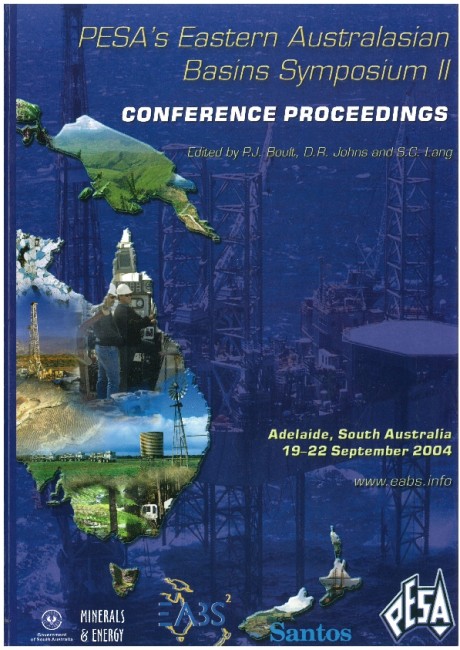Publication Name: PESA's Eastern Australasian Basin Symposium II
Authors: P.J. Boult, P. Lyon, B. Camac, D. Edwards and D.M. McKirdy
Date Published: December 2004
Number of Pages: 33
Reference Type: Book Section
Abstract:
The Penola Trough is host to five commercial gas fields containing an estimated 127 petajoules of gas, while seven, possibly eight, wells have intersected residual or palaeo-gas and oil columns. Most gas accumulations are, or have been, full to structural spill point or seal capacity. Many traps have been breached during Tertiary compression. Source rocks are shales of the Casterton Formation and lower Pretty Hill Formation. An early oil charge was displaced by a later gas charge during the Albian-Aptian. Possible top-up of gas occurred during the Tertiary. Gas wetness and the probability of oil occurrence increase towards the trough margin. Reservoir net to gross ratios are related to structural control on initial deposition and subsequent diagenesis.In situ gas columns are evident from RFT/MDT data. Palaeo-columns have been interpreted to exist, with varying
degrees of confidence, using a variety of methods. Early and palaeo-oil charge have been identified by three methods. Palaeo-gas columns are more difficult to establish, but can be identified by eight different methods.
The Laira Formation and intraformational shales of the Pretty Hill Formation are the major regional seals. These have variable internal seal capacity and contain potential thief zones. Shale smear needs to be invoked within fault planes in some locations for retention of commercial sized columns. Seal breach and the concomitant formation of palaeo-gas columns is caused by strain associated with recent inversion tectonics. This created structural permeability within the caprock which is related to either pre-existing faults or downward propagation of newer faults.


